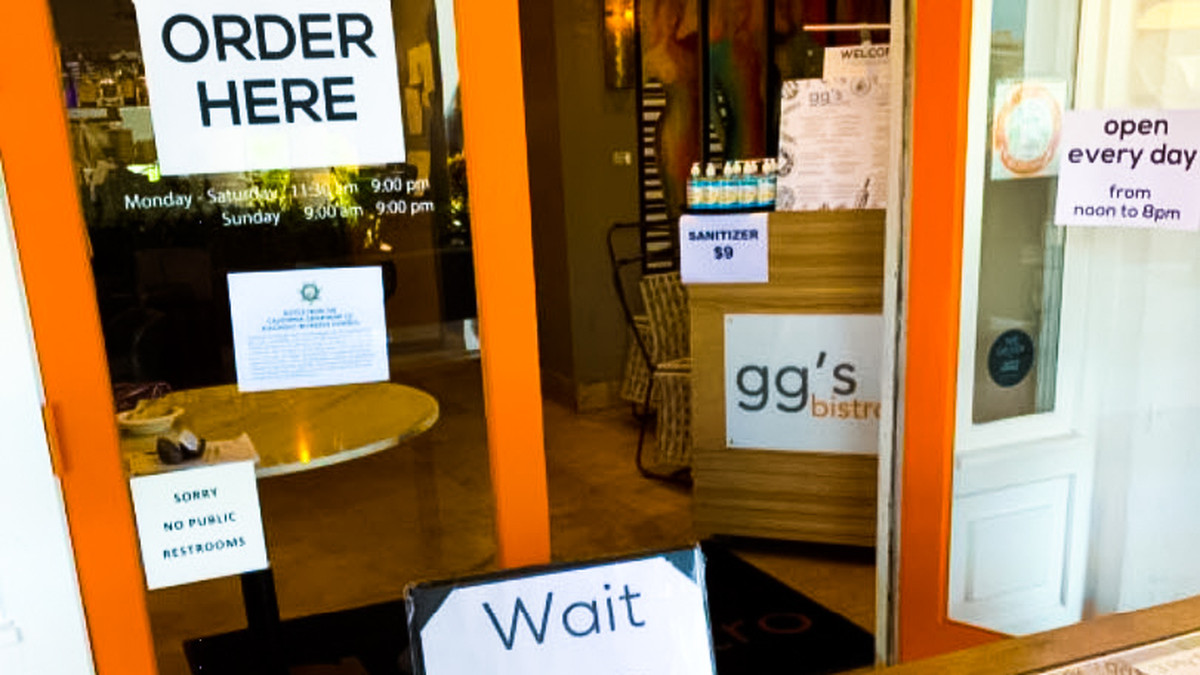Drivers on the California South Coast Highway passing by GG’s Bistro, which serves Mediterranean and Turkish fare, are greeted with humorous, eye-catching messages such as “Eat here or we will both starve.” This family-owned business that opened in 2005, along with its owners Francesca and Ragip Gundogar, faces similar challenges to restaurants across the globe as they navigate safely operating during COVID-19.
Restaurants offering limited pickup and delivery options are redesigning their business model with new limitations. Those that are opening for dine-in service at limited capacity must create a new dining experience. Navigating the new challenges for restaurants requires looking at everything from new cleaning and disinfecting protocols for staff, to enforcing physical distancing guidelines and to single-use menus. Additionally, restaurant owners must market to customers about their restaurant’s safety precautions to keep enough revenue flowing to keep their doors open.
The key to a safe and enjoyable experience is effectively communicating changes in the dining experience and specific directions to everyone in the restaurants. The eye-catching chalkboard messages are only part of the Gundogars’ communications during COVID-19. Recently, they have created professional signs, visually pleasing disposable menus and even single-use placemats.
Because guidelines and expectations are likely to continue to change, restaurants need the ability to easily changes printed materials such as menus and other signs. Instead of having to pay for each change and wait for a print or copy shop to process their orders, they simply design and print their updated materials right in their restaurant, saving money and responding quickly to changing needs.
Here are seven things to consider as your restaurant adapts to the shifting changes to serving customers:
Develop a comprehensive workplace plan.
Review every process performed in the operation of the restaurant to ensure it meets your local and state regulations as well as follows current safety recommendations. Create a worksite-specific COVID-19 mitigation plan for every location and perform a comprehensive risk assessment of all work areas. Because your restaurant’s ability to operate depends on your staff staying well and feeling safe coming to work, talk to your employees to gauge their comfort level, and make additional changes beyond what’s required.
Next, create a written, worksite-specific plan (for each location) that details every process and highlights all changes. Then, designate a person at each restaurant location to “own” the plan and be responsible for putting the new processes into action. If you have multiple locations, set up communication so the leads at each location can share ideas and communicate issues to make it easy to collaborate.
Consider your menu format.
Before COVID-19, many people could touch a menu each day, including hostesses, servers, patrons. Going forward, you’ll likely need to implement single-use menus that can be disposed of after a guest use. The single-use menus at GG’s Bistro also serve as placemats, which employees throw away after the meal is over. Added benefits of using a single-use format is that you can quickly swap out items for new ones and print only the number of menus you need based on demand.
Restaurants may also provide a printed card on the table with a QR code for diners to scan and view the menu on their personal devices. If you must use reusable menus and they are allowed in your state, create a process for properly disinfecting them before and after each customer.
Learn how one California restaurant continues to offer a great experience during the pandemic with help from an Epson business printer.
Provide employees with necessary equipment.
To keep your employees and guests safe, provide employees with masks, gloves and clean aprons for every shift. Create signs for employees to return items to buckets at the end of shifts for either disposal or cleaning. By installing hand sanitizing stations in the kitchen and work areas, employees are more likely to follow sanitizing guidelines.
Eliminate items shared between guests and employees.
Instead of setting the table with salt/pepper shakers and condiments, move to single servings or pre-sealed packets. Make sure items such as bread baskets, pizza stands and serving trays are properly sanitized between uses. Instead of pre-setting tables with napkins, utensils and coffee cups, employees should set down a pre-rolled napkin with utensils when seating guests. Walk through the entire dining experience to find any other items possibly shared among people at your restaurant, such as toothpick containers, utensil caddies, arcade games, pool tables and vending machines.
Create additional outdoor dining spaces.
Because guests may feel safer outside, many restaurants are adding additional outdoor space or making existing space more attractive to diners. If your deck or patio often gets hot in the glare of the day, consider adding a tarp and fans to provide a more welcoming option for those not comfortable going inside a restaurant. No deck? Consider converting other spaces — such as grassy areas or parking lots — into additional seating areas.
Strategically communicate safety measures throughout the restaurant.
Create signs reminding employees and guests of important measures, such as a wearing face coverings and physical distancing. In addition to outside signs letting people know the bistro was open, the Gundogars printed 17” x 22” announcements showing guests where to stand while picking up takeout. Other signs to consider include asking patrons to not move tables to ensure distancing, maximum occupancy at tables, closed sections and one-way aisles. To help staff remember and comply with new cleaning and disinfecting protocols, create signage with reminders and step-by-step guidance.
Train employees on the new processes.
Before reopening for dine-in or takeout service, create an employee handbook detailing all new procedures. Hold a training session to walk through all the new processes and demonstrate cleaning processes. Then, have employees demonstrate mastery of the new processes before they begin working again, and offer ample time so they can ask questions and share any concerns. Be sure to staff your restaurant adequately so employees have enough time to focus attention on cleaning and disinfecting protocols. .
As a restaurant owner, you are facing many challenges right now as you work to safely operate your restaurant during changing times. Your employees and guests are also getting used to new processes, as well as facing additional challenges in their personal lives. By creating effective signs and communications, everyone who enters your restaurant has the information needed to keep themselves and others safe while dining or carrying out at your establishment.
![]()



